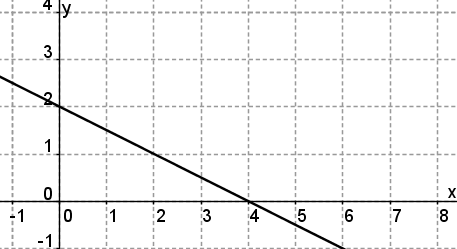Hints will display for most wrong answers; explanations for most right answers. You can attempt a question multiple times; it will only be scored correct if you get it right the first time.
I used the official objectives and sample test to construct these questions, but cannot promise that they accurately reflect what’s on the real test. Some of the sample questions were more convoluted than I could bear to write. See terms of use. See the MTEL Practice Test main page to view random questions on a variety of topics or to download paper practice tests.
MTEL General Curriculum Mathematics Practice
Question 1 |
There are 15 students for every teacher. Let t represent the number of teachers and let s represent the number of students. Which of the following equations is correct?
\( \large t=s+15\) Hint: When there are 2 teachers, how many students should there be? Do those values satisfy this equation? | |
\( \large s=t+15\) Hint: When there are 2 teachers, how many students should there be? Do those values satisfy this equation? | |
\( \large t=15s\) Hint: This is a really easy mistake to make, which comes from transcribing directly from English, "1 teachers equals 15 students." To see that it's wrong, plug in s=2; do you really need 30 teachers for 2 students? To avoid this mistake, insert the word "number," "Number of teachers equals 15 times number of students" is more clearly problematic. | |
\( \large s=15t\) |
Question 2 |
Use the graph below to answer the question that follows.

Which of the following is a correct equation for the graph of the line depicted above?
\( \large y=-\dfrac{1}{2}x+2\) Hint: The slope is -1/2 and the y-intercept is 2. You can also try just plugging in points. For example, this is the only choice that gives y=1 when x=2. | |
\( \large 4x=2y\) Hint: This line goes through (0,0); the graph above does not. | |
\( \large y=x+2\) Hint: The line pictured has negative slope. | |
\( \large y=-x+2\) Hint: Try plugging x=4 into this equation and see if that point is on the graph above. |
Question 3 |
A map has a scale of 3 inches = 100 miles. Cities A and B are 753 miles apart. Let d be the distance between the two cities on the map. Which of the following is not correct?
\( \large \dfrac{3}{100}=\dfrac{d}{753}\) Hint: Units on both side are inches/mile, and both numerators and denominators correspond -- this one is correct. | |
\( \large \dfrac{3}{100}=\dfrac{753}{d}\) Hint: Unit on the left is inches per mile, and on the right is miles per inch. The proportion is set up incorrectly (which is what we wanted). Another strategy is to notice that one of A or B has to be the answer because they cannot both be correct proportions. Then check that cross multiplying on A gives part D, so B is the one that is different from the other 3. | |
\( \large \dfrac{3}{d}=\dfrac{100}{753}\) Hint: Unitless on each side, as inches cancel on the left and miles on the right. Numerators correspond to the map, and denominators to the real life distances -- this one is correct. | |
\( \large 100d=3\cdot 753\) Hint: This is equivalent to part A. |
Question 4 |
Which of the following is the equation of a linear function?
\( \large y={{x}^{2}}+2x+7\) Hint: This is a quadratic function. | |
\( \large y={{2}^{x}}\) Hint: This is an exponential function. | |
\( \large y=\dfrac{15}{x}\) Hint: This is an inverse function. | |
\( \large y=x+(x+4)\) Hint: This is a linear function, y=2x+4, it's graph is a straight line with slope 2 and y-intercept 4. |
Question 5 |
The Americans with Disabilties Act (ADA) regulations state that the maximum slope for a wheelchair ramp in new construction is 1:12, although slopes between 1:16 and 1:20 are preferred. The maximum rise for any run is 30 inches. The graph below shows the rise and runs of four different wheelchair ramps. Which ramp is in compliance with the ADA regulations for new construction?

AHint: Rise is more than 30 inches. | |
BHint: Run is almost 24 feet, so rise can be almost 2 feet. | |
CHint: Run is 12 feet, so rise can be at most 1 foot. | |
DHint: Slope is 1:10 -- too steep. |
Question 6 |
A publisher prints a series of books with covers made of identical material and using the same thickness of paper for each page. The covers of the book together are 0.4 cm thick, and 125 pieces of the paper used together are 1 cm thick.
The publisher uses a linear function to determine the total thickness, T(n) of a book made with n sheets of paper. What are the slope and intercept of T(n)?
Intercept = 0.4 cm, Slope = 125 cm/pageHint: This would mean that each page of the book was 125 cm thick. | |
Intercept =0.4 cm, Slope = \(\dfrac{1}{125}\)cm/pageHint: The intercept is how thick the book would be with no pages in it. The slope is how much 1 extra page adds to the thickness of the book. | |
Intercept = 125 cm, Slope = 0.4 cmHint: This would mean that with no pages in the book, it would be 125 cm thick. | |
Intercept = \(\dfrac{1}{125}\)cm, Slope = 0.4 pages/cmHint: This would mean that each new page of the book made it 0.4 cm thicker. |
Question 7 |
A family went on a long car trip. Below is a graph of how far they had driven at each hour.

Which of the following is closest to their average speed driving on the trip?
\( \large d=20t\) Hint: Try plugging t=7 into the equation, and see how it matches the graph. | |
\( \large d=30t\) Hint: Try plugging t=7 into the equation, and see how it matches the graph. | |
\( \large d=40t\) | |
\( \large d=50t\) Hint: Try plugging t=7 into the equation, and see how it matches the graph. |
Question 8 |
In March of 2012, 1 dollar was worth the same as 0.761 Euros, and 1 dollar was also worth the same as 83.03 Japanese Yen. Which of the expressions below gives the number of Yen that are worth 1 Euro?
\( \large {83}.0{3}\cdot 0.{761}\) Hint: This equation gives less than the number of yen per dollar, but 1 Euro is worth more than 1 dollar. | |
\( \large \dfrac{0.{761}}{{83}.0{3}}\) Hint: Number is way too small. | |
\( \large \dfrac{{83}.0{3}}{0.{761}}\) Hint: One strategy here is to use easier numbers, say 1 dollar = .5 Euros and 100 yen, then 1 Euro would be 200 Yen (change the numbers in the equations and see what works). Another is to use dimensional analysis: we want # yen per Euro, or yen/Euro = yen/dollar \(\times\) dollar/Euro = \(83.03 \times \dfrac {1}{0.761}\) | |
\( \large \dfrac{1}{0.{761}}\cdot \dfrac{1}{{83}.0{3}}\) Hint: Number is way too small. |
Question 9 |
Which of the lines depicted below is a graph of \( \large y=2x-5\)?

aHint: The slope of line a is negative. | |
bHint: Wrong slope and wrong intercept. | |
cHint: The intercept of line c is positive. | |
dHint: Slope is 2 -- for every increase of 1 in x, y increases by 2. Intercept is -5 -- the point (0,-5) is on the line. |
Question 10 |
The equation \( \large F=\frac{9}{5}C+32\) is used to convert a temperature measured in Celsius to the equivalent Farentheit temperature.
A patient's temperature increased by 1.5° Celcius. By how many degrees Fahrenheit did her temperature increase?
1.5°Hint: Celsius and Fahrenheit don't increase at the same rate. | |
1.8°Hint: That's how much the Fahrenheit temp increases when the Celsius temp goes up by 1 degree. | |
2.7°Hint: Each degree increase in Celsius corresponds to a \(\dfrac{9}{5}=1.8\) degree increase in Fahrenheit. Thus the increase is 1.8+0.9=2.7. | |
Not enough information.Hint: A linear equation has constant slope, which means that every increase of the same amount in one variable, gives a constant increase in the other variable. It doesn't matter what temperature the patient started out at. |
Question 11 |
Use the graph below to answer the question that follows:

The graph above represents the equation \( \large 3x+Ay=B\), where A and B are integers. What are the values of A and B?
\( \large A = -2, B= 6\) Hint: Plug in (2,0) to get B=6, then plug in (0,-3) to get A=-2. | |
\( \large A = 2, B = 6\) Hint: Try plugging (0,-3) into this equation. | |
\( \large A = -1.5, B=-3\) Hint: The problem said that A and B were integers and -1.5 is not an integer. Don't try to use slope-intercept form. | |
\( \large A = 2, B = -3\) Hint: Try plugging (2,0) into this equation. |
If you found a mistake or have comments on a particular question, please contact me (please copy and paste at least part of the question into the form, as the numbers change depending on how quizzes are displayed). General comments can be left here.